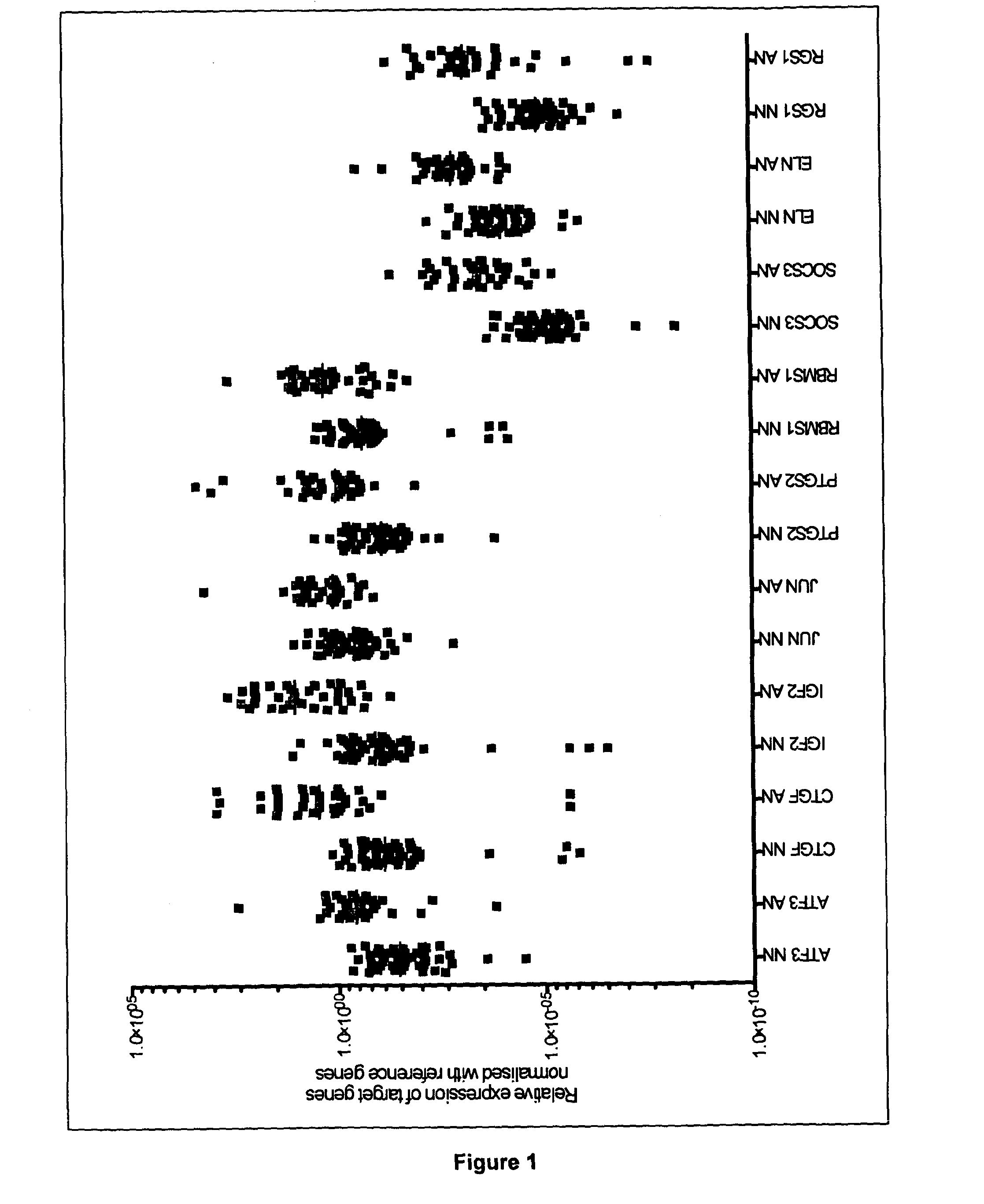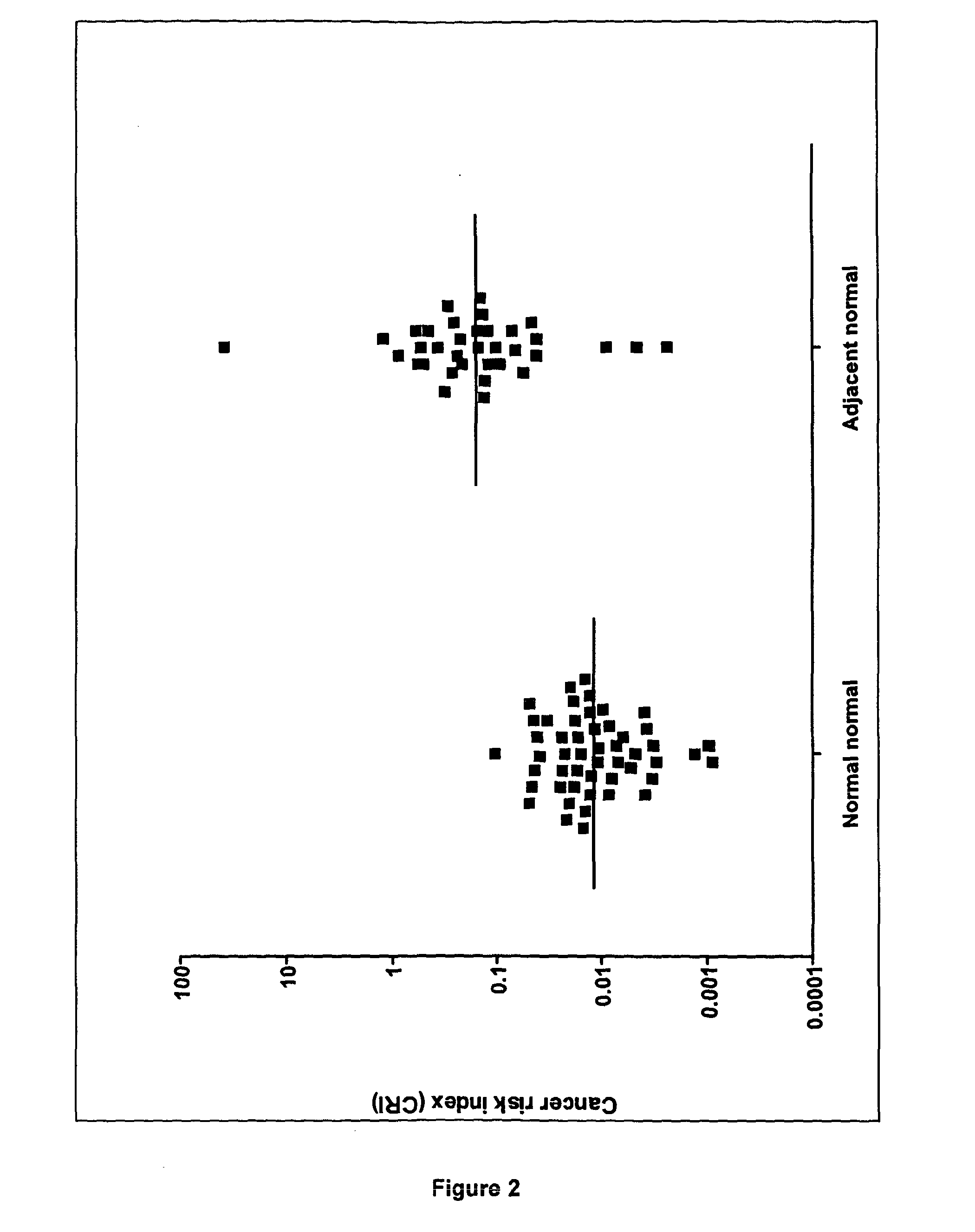Method of detecting risk of cancer
a cancer risk and cancer technology, applied in the field of methods of detecting cancer risk, can solve the problems of low pick-up rate, unsatisfactory tests, and resource intensiv
- Summary
- Abstract
- Description
- Claims
- Application Information
AI Technical Summary
Benefits of technology
Problems solved by technology
Method used
Image
Examples
Embodiment Construction
[0015]The present invention is based on the surprising identification of a combination of nine genes that are effective markers for cancer, in particular colorectal cancer. Identification of each of the nine genes, or their expressed products such as mRNA or a polypeptide, in a tissue sample obtained from a patient, preferably a colorectal tissue sample, and comparison of the expression level of the genes with the expression level of the corresponding genes in a control sample indicates the risk of cancer in the patient. This combination of marker genes is therefore useful in predisposition tests for cancer.
[0016]The combination of marker genes identified herein is useful in diagnosing the risk of cancer in an individual who has not yet developed the disease, i.e. the marker genes are capable of identifying those individuals who are asymptomatic but who have a genetic predisposition to developing cancer. Such individuals benefit from an early indication of this predisposition as it ...
PUM
| Property | Measurement | Unit |
|---|---|---|
| CRI | aaaaa | aaaaa |
| word length | aaaaa | aaaaa |
| molecular weight | aaaaa | aaaaa |
Abstract
Description
Claims
Application Information
 Login to View More
Login to View More - R&D
- Intellectual Property
- Life Sciences
- Materials
- Tech Scout
- Unparalleled Data Quality
- Higher Quality Content
- 60% Fewer Hallucinations
Browse by: Latest US Patents, China's latest patents, Technical Efficacy Thesaurus, Application Domain, Technology Topic, Popular Technical Reports.
© 2025 PatSnap. All rights reserved.Legal|Privacy policy|Modern Slavery Act Transparency Statement|Sitemap|About US| Contact US: help@patsnap.com


